What treatment options are available?
There are a few ways to treat scoliosis in children. These methods include doing nothing (only observing), using a brace, implementing exercises, or doing surgery. Treatment, usually in the form of exercises, can also be done for adults, but all treatment is most effective if started as early as possible and certainly before the child stops growing. That being said, studies show that 90 per cent of infantile scoliosis resolves or goes away on its own. In other words, the child will "grow out of it."
Selecting treatment options for the child with scoliosis involves several factors; the age of the child, the degree of the spinal curve, the skeletal maturity of the spine, and the preferences of the patient and family.
Choosing the optimal treatment largely depends on the degree or severity of the scoliosis. Physical examinations and x-rays taken over a period of time will help show if the scoliosis is staying the same or progressing. Curves 45 degrees or less are more likely to be treated conservatively with exercises or bracing. Curves that are changing rapidly or that are greater than 45 degrees may require surgery.
Nonsurgical Treatment
Treatment may be nothing more than regular observation especially if the curve is 30-degrees or less in a child who is no longer growing. If the curve is progressing and the child is growing rapidly, or if the curve is 30-degrees or more, the child is referred to a physiotherapist for exercises and to an orthopedic surgeon for bracing and to monitor progression in regards to the potential need for a surgical option.
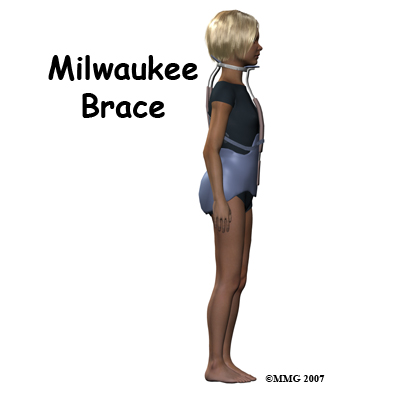 The best bracing results occur in children with slowly progressing curvatures that are detected and treated early. Most braces are worn over a tightly fitting cotton T-shirt but under the clothes. While wearing the brace, physical activity is restricted.
The best bracing results occur in children with slowly progressing curvatures that are detected and treated early. Most braces are worn over a tightly fitting cotton T-shirt but under the clothes. While wearing the brace, physical activity is restricted.
The two braces (orthosis) that are used most often for scoliosis are the Milwaukee brace and the Boston brace. The Boston brace is also called a thoracolumbosacral-orthosis or TLSO. Studies show that bracing for scoliosis controls the curve and prevents progression. In most cases, bracing does not correct the curve; it just keeps it from getting worse. Bracing is less likely to stop curves larger than 40-degrees and is more effective for single curves in the thoracic spine than for double curves.
The Milwaukee Brace is a corrective brace used with children and adolescents who have scoliosis. It has a pelvic girdle, two posterior uprights, one anterior upright, and a ring around the base of the skull that also supports the lower jaw. Originally made of leather and metal, it has been revised now and is constructed out of rigid plastic with metal uprights. Pads with straps attached to the frame are used to apply corrective forces.
The Boston Brace used for the treatment of scoliosis is very similar to the Milwaukee orthosis. The Boston brace does not extend up as high into the thoracic spine and it does not have the vertical bar in front of the chest or the cervical ring. The Boston brace works best for children who have immature spines or moderate scoliotic curves in the lower thoracic and upper lumbar spines.
While in the brace, your child won't be able to participate in sports that require flexibility such as gymnastics or tumbling. Physical contact sports such as football, hockey, or soccer are also prohibited while wearing the brace. Some children, with their physician's approval, are allowed to remove the brace for two to three hours each day and participate in sports during that time, but generally the brace is worn at all times.
Bracing is usually used for at least two years or until there is no sign on x-ray of further change. Your surgeon will follow your child at regular intervals. Follow-up visits and repeated x-rays are needed more often for the child who has a rapidly progressing curve or one who is in a growth spurt.
For many years, exercise was not considered effective in stopping or changing spinal curvatures from scoliosis. Recently, however, researchers have taken a closer look at exercise as a form of treatment. It has been found that in previous studies that discounted exercise, most of the children didn't do the exercises! Or, if they did, they only did them occasionally. Unless the exercise program was designed to prepare for a sports activity, compliance was very low.
Improved technology and the ability to assess muscle function have changed the picture in regards to the benefits of exercise for scoliosis. We now know that there is asymmetry in muscle function for everyone with scoliosis. More specifically, there is an uneven strength in trunk rotation. This asymmetry affects one’s posture, affects one’s appearance, can cause pain, and in more severe cases can affect the ability of one’s lungs to function to their full capacity since they are located in the area of the curved thoracic spine.
One of our physiotherapists at Emerald Hills Physio & Sports Clinic can guide your child through the appropriate exercise program to halt or slow progression of their scoliotic curve, decrease any associated pain, maintain or improve posture and appearance, as well as maintain the ability of the lungs to function well. Although recent studies mainly support progressive resistive exercises as being most effective for curves less than 45 degrees, all patients with scoliosis can potentially benefit from doing exercises that strengthen and stretch the muscles that have been affected, which can, in turn, can halt or slow the progression of the curve.
At your first visit to Emerald Hills Physio & Sports Clinic your physiotherapist will ask a number of questions regarding your child’s scoliosis, including when it was first noticed, if any x-rays or other investigative tests have been done, if there is any associated pain, what activities, if any, are limited due to the scoliosis, and they will also inquire about what current sports or activities your child partakes in (if they are old enough to do so.) They will also want to know whether or not a brace has been recommended or an orthopaedic surgeon has been consulted.
At the initial assessment your physiotherapist will observe and palpate (feel) your child’s spine in standing, sitting, and in a face-down position, and will ask your child to perform a number of motions to assess the movement of the spine, such as side bending, leaning backwards and forwards, and twisting. They will look for a thoracic rib hump. As mentioned previously, when bending forward, due to the rotation of the vertebrae and the attached ribs, the ribs on one side create a ‘rib hump’, which is more pronounced the greater the curve.
Your physiotherapist will also observe how your child’s shoulders, neck, hips, and low back move, as all of these areas can be adversely affected by a scoliotic spine, and will require specific exercises to maintain or regain their motion and strength.
Your physiotherapist will also take some measurements of how well your child is moving. These measurements may be as simple as measuring how far your child can reach when they bend forward or twist.
Next your physiotherapist will look for any abnormal tightness or elongation in the muscles around your child’s back, abdominal area, shoulders, hips, legs, and neck. In addition, they will also assess the degree of muscle imbalance present in your child around these areas, particularly the muscles of the back. With scoliosis the muscles of the back become tight and overly strong on the concave part of the curve or curves, and weak and elongated on the convex side.
Your physiotherapist may also have your child perform some functional tests, such as lifting an item overhead, or jumping on one foot to determine how the scoliosis is affecting their ability to do everyday activities.
The next part of your child’s treatment at Emerald Hills Physio & Sports Clinic will involve your therapist designing a specific exercise program that they will ask your child to perform both in the clinic as well as at home. Depending on the age of your child, your assistance may be required for the exercises. The exercises included will address each child’s specific needs, however, most scoliosis programs will include stretching exercises for the back, shoulders, hips and back of the legs. Also included will be strengthening exercises that involve rotation of the spine, extension of the spine and shoulders, side bending of the spine, and core stability exercises including tilting of the pelvis. Exercises for the hips will include focusing on strengthening the buttocks area as the buttocks plays a large role in supporting the low back, which in turn supports the thoracic spine. The use of exercise bands, weights, and weight machines will be incorporated once the technique of the exercises has been mastered. Using resistance with exercises has been proven, in some types of scoliosis curves, to be the key to halting the progression (or sometimes even reversing it mildly.) Some exercises may involve simply activating or tightening a muscle without actually moving the joint or limb (termed isometric exercises). Even though they do not involve motion, these types of exercises can assist in strengthening the required muscles to maintain good posture, and halt the progression of the scoliosis.
The advice of a physiotherapist is crucial in regards to exercise technique, advancing exercises, or increasing the weight used with any exercise that is used to treat a scoliosis. Doing incorrect exercises or using too much weight could make a scoliosis worse or cause compensatory pain. As the scoliotic curvature causes an imbalance in the strength and length of the muscles of the body, don’t be surprised if your physiotherapist at Emerald Hills Physio & Sports Clinic asks you to do more repetitions or use heavier weights when doing an exercise on one side versus the other in order to start shifting the imbalance back towards a more neutral position.
As mentioned above, the curving and twisting of the spine has the potential to affect your child’s lung capacity as the lungs are located directly in front of the thoracic spine. For this reason it is important that your child performs deep breathing exercises or partakes in cardiovascular activities that encourage them to deep breath to maintain the lung’s capacity. Maintaining good posturing will also assist in maintaining lung function, therefore the final component to our treatment at Emerald Hills Physio & Sports Clinic will be to provide education on maintaining good posturing as often as possible. As gravity is constantly pulling the body downwards, holding one’s body properly when walking, sitting, standing and during regular activities of daily living can make an enormous difference to how the muscles pull on the spine. Maintaining good posturing as often as possible is just as important in your child’s rehabilitation program as doing the specific exercises that your therapist prescribes.
Often exercises are used in conjunction with bracing when treating scoliosis. Unfortunately, there are cases where neither the bracing nor the exercises will assist in halting or slowing the progression of the scoliosis. In these cases, surgery may be required.
Emerald Hills Physio & Sports Clinic provides services for physiotherapy in Sherwood Park.
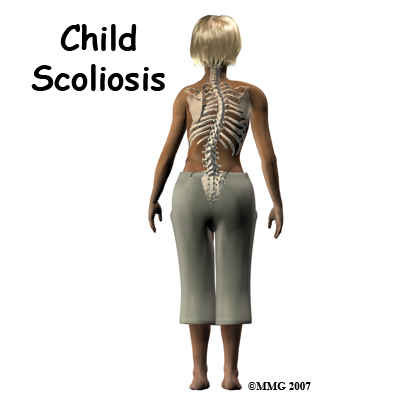 Scoliosis is a deformity in the spine that causes an abnormal C-shaped (one curve) or S-shaped (two curves) curvature. The spine is not straight but curves to one or both sides.
Scoliosis is a deformity in the spine that causes an abnormal C-shaped (one curve) or S-shaped (two curves) curvature. The spine is not straight but curves to one or both sides.
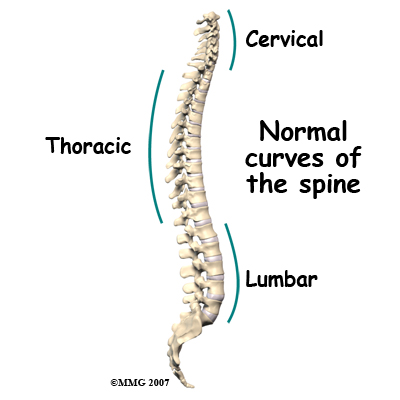
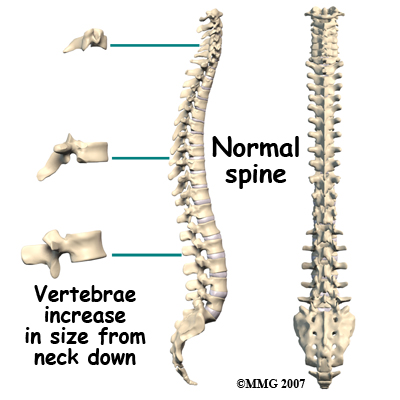
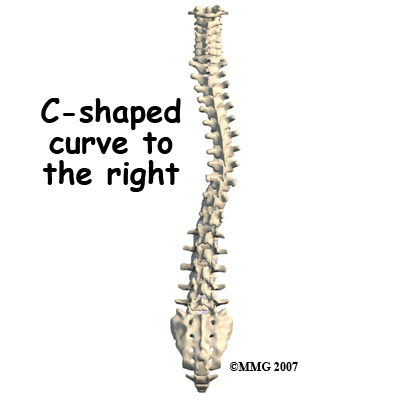 Sometimes it is not known why a scoliosis develops. If the specific cause is unknown, it is termed idiopathic. Idiopathic scoliosis is the most common type of scoliosis and affects about two to three per cent of the population. It tends to run in families and is more common in girls than in boys. Most often the scoliosis develops in middle or late childhood during a rapid growth spurt.
Sometimes it is not known why a scoliosis develops. If the specific cause is unknown, it is termed idiopathic. Idiopathic scoliosis is the most common type of scoliosis and affects about two to three per cent of the population. It tends to run in families and is more common in girls than in boys. Most often the scoliosis develops in middle or late childhood during a rapid growth spurt.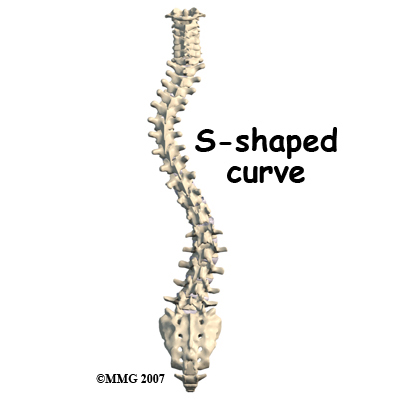
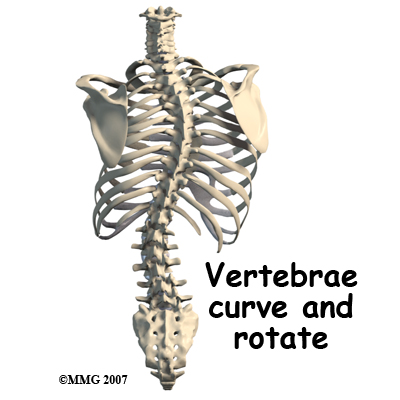
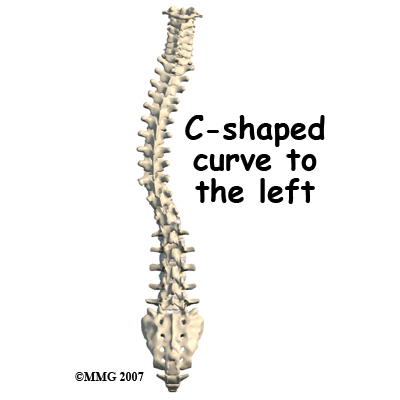
 As a result, the shoulders and hips may be uneven, causing one shirtsleeve or pant leg to seem shorter than the other. Often there is rotation of the vertebrae causing an uneven waist so that a pair of pants or skirt twists to one side.
As a result, the shoulders and hips may be uneven, causing one shirtsleeve or pant leg to seem shorter than the other. Often there is rotation of the vertebrae causing an uneven waist so that a pair of pants or skirt twists to one side. The best bracing results occur in children with slowly progressing curvatures that are detected and treated early. Most braces are worn over a tightly fitting cotton T-shirt but under the clothes. While wearing the brace, physical activity is restricted.
The best bracing results occur in children with slowly progressing curvatures that are detected and treated early. Most braces are worn over a tightly fitting cotton T-shirt but under the clothes. While wearing the brace, physical activity is restricted. 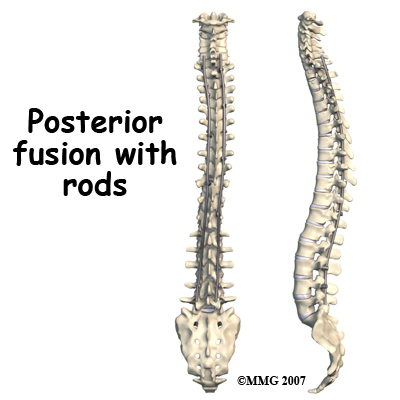 When surgery is performed for scoliosis metal rods or screws are used to help straighten and hold the spine in a corrected position. The vertebra are fused (joined together) to help correct the curvature. Luckily, only a small number of people with scoliosis require surgical intervention. New surgical techniques are designed to give maximum correction with a minimum of incisions and scarring.
When surgery is performed for scoliosis metal rods or screws are used to help straighten and hold the spine in a corrected position. The vertebra are fused (joined together) to help correct the curvature. Luckily, only a small number of people with scoliosis require surgical intervention. New surgical techniques are designed to give maximum correction with a minimum of incisions and scarring.